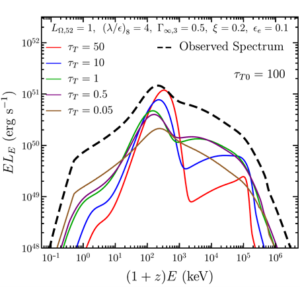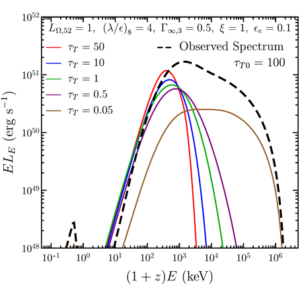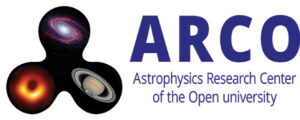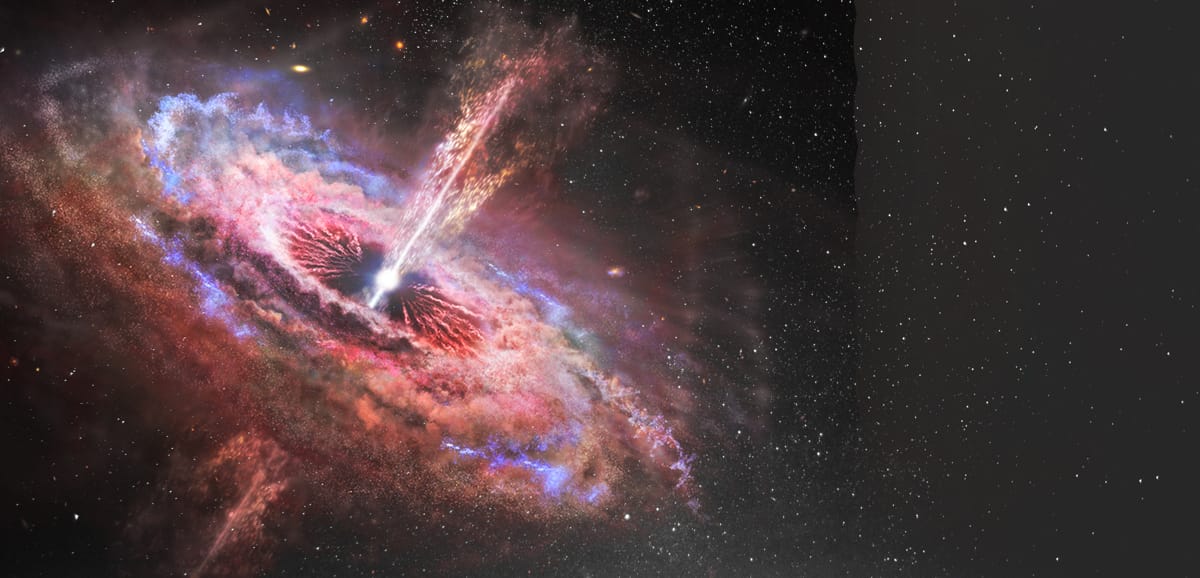Gamma-ray bursts (GRBs) are the most (electromagnetically) luminous transient phenomenon in the Universe, outshining the entire gamma-ray sky during their brief prompt emission phase. The latter typically lasts for ~0.03-1 s (in short-hard GRBs, produced by mergers of two neutron stars or a neutron star and a black hole) or ~3-300 s (in long-soft GRBs, produced during the explosion of massive, rapidly rotating stars, accompanied by a powerful supernova explosion). This emission is powered by a relativistic jet but the exact radiation mechanism is still a mystery. Most popular explanations include synchrotron emission from relativistic electrons with a power-law energy distribution, or Compton scattering of thermal photons trapped in the jet by warm electrons. Both of these emission mechanisms often feature in a general class of photospheric emission models that include a prominent quasi-thermal spectral component.
In this work, Dr. Ramandeep Gill, Prof. Jonathan Granot and Dr. Paz Beniamini (all from ARCO) studied how the non-thermal smoothly broken power law spectrum of the prompt GRB emission is produced in magnetized jets. Such jets are accelerated by the gradual and continuous dissipation of the magnetic field energy, where particles are accelerated or heated via magnetic reconnection and/or magnetohydrodynamic (MHD) instabilities. This work shows in great detail how the final spectrum is generated by a magnetized jet as it expands (see the figure). It clearly demonstrates that if electrons are accelerated into a relativistic power-law energy distribution, then synchrotron emission is the dominant radiation mechanism (left panel). Alternatively, if electrons are heated into a warm plasma (all particles having the same average energy), then the prompt GRB spectrum forms via Compton scattering of thermal photons (right panel). The shown spectra are obtained from a specially designed numerical code that accurately accounts for all relevant high-energy processes, including production and annihilation of electron-positron pairs, in a relativistically expanding jet.


The way the low- and high-energy (below and above the spectral peak) parts of the spectrum are generated has important implications for energy-dependent linear polarization. In the left panel, synchrotron emission can yield strong linear polarization, depending on the magnetic field geometry. In the right panel, however, multiple Compton scatterings wash out any polarization and only produce a negligible global polarization in a uniform (with no local angular structure) jet. Using these results, more sensitive spectro-polarimetric observations from detectors onboard upcoming space missions will help to pin down the exact prompt GRB radiation mechanism.





